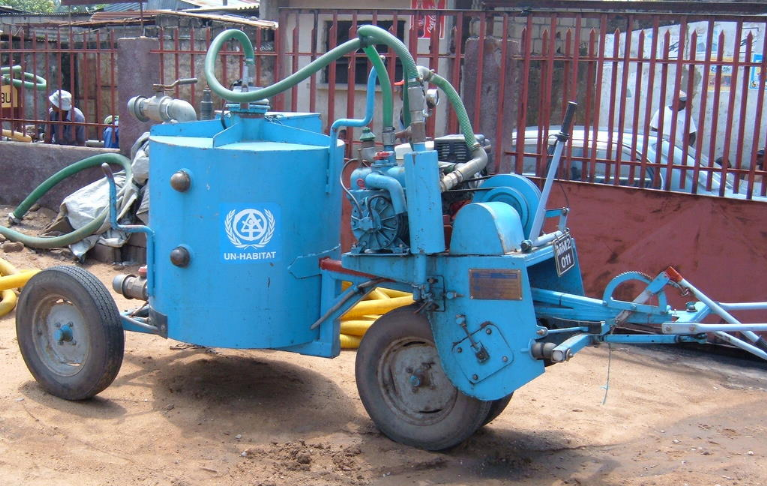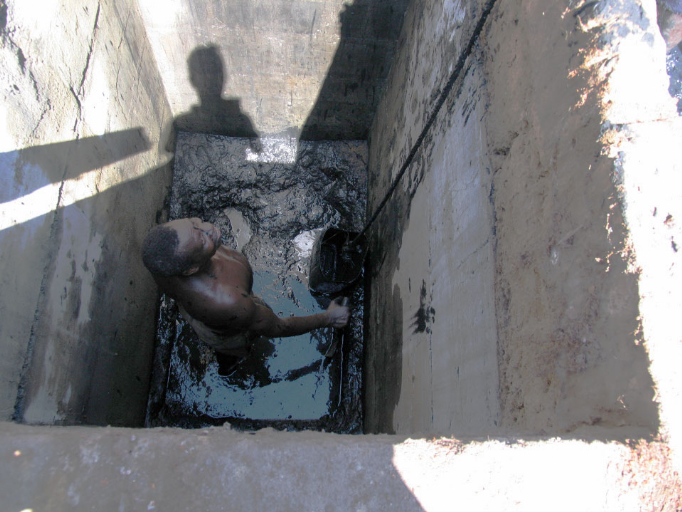2.2 Sanitation marketing
The main motivation behind sanitation marketing is the
observation that, in many coun- tries, most latrines are privately acquired
rather than provided by sanitation programmes (Jenkins, 2004). According to
Cairncross (2004):
«By building on the market's proven ability to respond to
consumer de-
mand, a marketing approach encourages the private provision of
household sanitation, while simultaneously promoting new demand. [...]
Marketing consists of activities by which you reach customers and persuade them
to buy and use a product or service.»
Sanitation marketing is claimed to have the following
advantages:
· «It ensures that people choose to receive what
they want and are willing to pay for.
· It is financially sustainable.
· It is cost-effective and can be taken to scale.
· Provision of hardware is not enough, and marketing
(with its four component strategies) is proven and highly effective way to
build demand.»
For sanitation programmes, marketing essentially means: using a
commercial approach
for delivering sanitation products and services; building the
private sector to make it sustainable, by removing constraints; use marketing
techniques and promotion to raise demand; and develop partnerships between the
public and private sector.
Marketing is formed of the «four core P's»:
Product, Price, Place and Promotion; social marketing adds sometimes a fifth P,
Policies, to refer to partnerships with the public sector (Heierli et al.,
2004). In sanitation, the four P's can be described as follows (Cairncross,
2004):
Product: The «product» can refer
to a latrine, or to a service such as pit emptying. It must respond to what
people want, and be innovative to alleviate the constraints people face.
Price: Most of those who need sanitation are
poor, and can least afford it. Costs must
be kept low, different products must be marketed within a range
of prices includ- ing very low-cost options to release demand.
Place: Potentially each household has to be
reached by the supply chain, for example
by training local masons and using door-to-door sales.
Promotion: It includes advertising techniques
but also ways to raise attention such as promotional offers or vouchers,
demonstration latrines, credit system, etc.
Jenkins & Sugden (2006) distinguish four phases in a
sanitation marketing programme, whose aims are to analyse the three aspects of
demand, supply and environment. Phase one is a rapid initial assessment of
sanitation coverage, demand and industry; phase two
is an in-depth assessment researching the service providers,
communication channels,
levels of demand and policies development. It leads to a strategy
implemented in phase
three, and phase four includes expansion and scaling-up.
The present research is focused on the qualitative consumer
research and the con- sumer sanitation demand baseline survey, in phase two.
2.3 Latrine pit emptying
Apart from sewered systems and ecological sanitation, most
low-cost sanitation systems rely on emptying at some point. Options for
sustainable latrine pit emptying are limited. The «classic» view on
the topic as mentioned in many textbooks (Mara, 1996a; Pickford,
1995) is to use vacuum tankers or a form a sewerage (settled
or simplified). Field manuals like Pickford & Shaw (1999) quote the same
techniques, or sometimes the use of double-pit latrines, allowing the contents
to settle and to be removed by hand when all pathogens have died. However,
those techniques have drawbacks limiting their use in urban environments:
vacuum tankers are expensive to operate as they consume too much fuel, they
wear rapidly and can access neither high-density housing areas, nor peri-urban
squatter settlements given their size (Muller, 1997). Sewerage systems require
investment, careful operation and maintenance, are not suited to any type of
terrain and definitely not to flat areas next to the sea (Mara, 1996b).
Double-pit latrines require space for digging, but also for the superstructure
in case of dry pits.
Other systems have been developed, most notably the Vacutug (see
Figure 2.2 below)
and affiliated systems, which involve a smaller vacuum tanker
with either a mechani-
cal pump (Vacutug, Micravac, Minivac, Maqunieta) or manual pump
(MAPET); some
are self-propelled (Maqunieta, Vacutug), other are
trailer-mounted (Minivac, Micravac) and the MAPET is pushed/towed manually.
First reports on these systems are usually positive, especially when they come
from the organisation which promotes them such
as UN-Habitat for the Vacutug (Wegelin-Schuringa & Coffey,
1998). However, later reports such as Klundert & Scheinberg (2006) state
that the MAPET has failed because
of high transportation costs, lack of network transfer points,
and the diversion of fund- ing to other projects. The Vacutug is in operation
in Dar-Es-Salaam, but only one such device is still operational and needs
subsidies to operate (ibid.) There is no evidence that the Micravac, Maqunieta
or Minivac have gone beyond the pilot project phase.
The two common alternative in absence of these systems is
either to build a new la- trine if there is enough space, or to use pit
emptiers who do it with buckets and shovels, such as the vyura
(«frogmen») of Dar-Es-Salaam (Figure 2.3). As they have to work
in the pits, their working conditions are unsafe; the transport
of excreta remains an un- solved problem; the cost can be as high as with
mechanical emptying devices according
to Still (2006); the emptiers often have to break the slab,
adding the repairing cost. Despite this, emptiers are the de facto solution
where nothing else exists.

Figure 2.2: The VacuTug in Dar-Es-Salaam

Figure 2.3: A «frogman» in a latrine pit, in
Dar-Es-Salaam
Rémi Kaupp
| 


